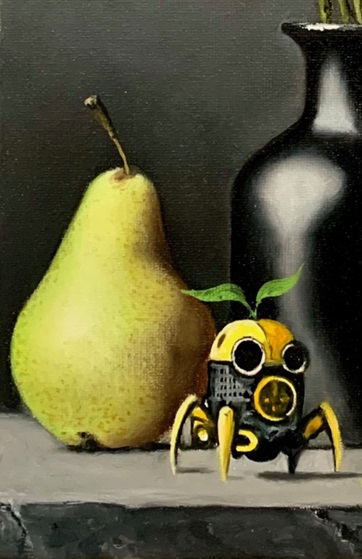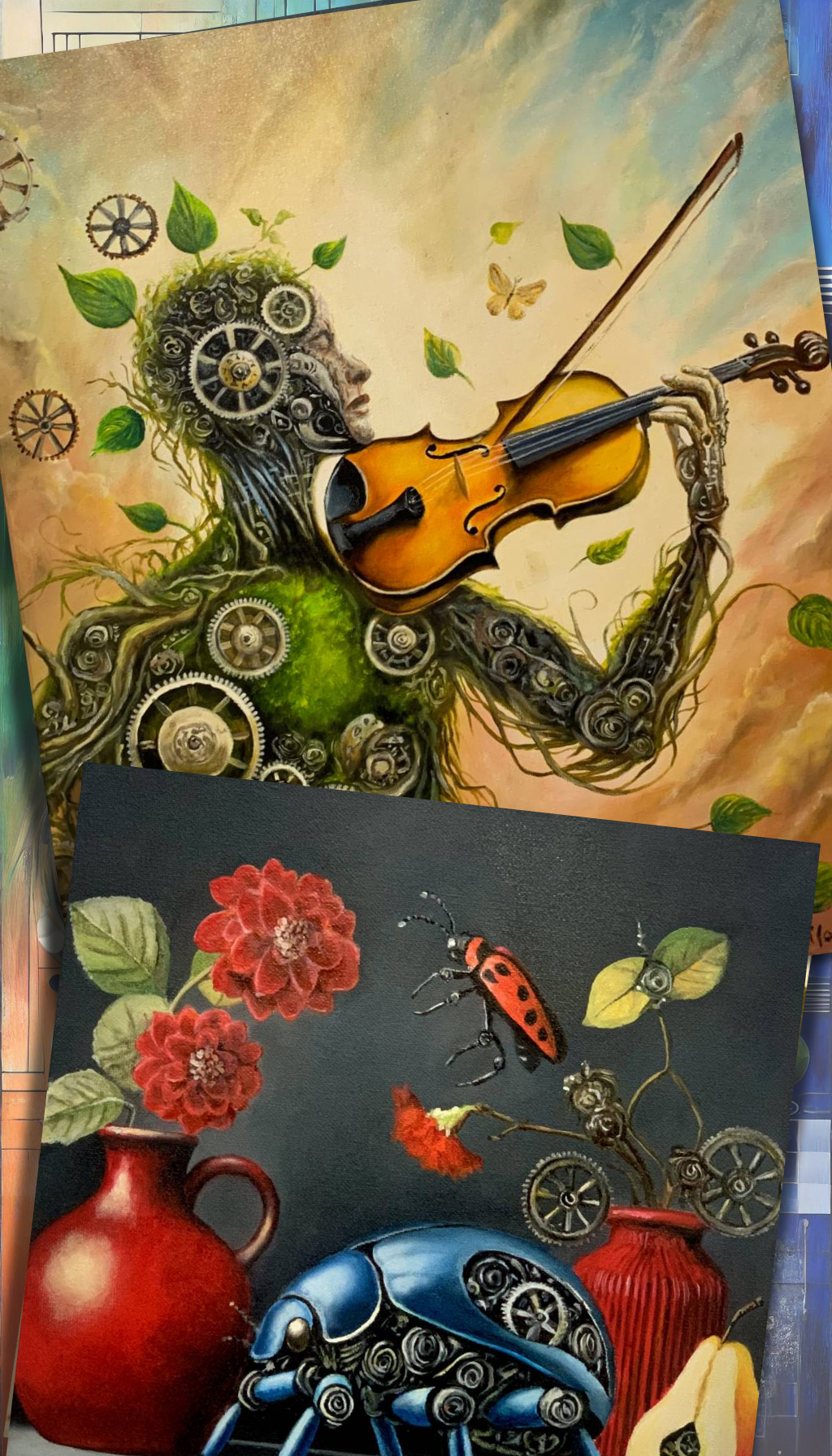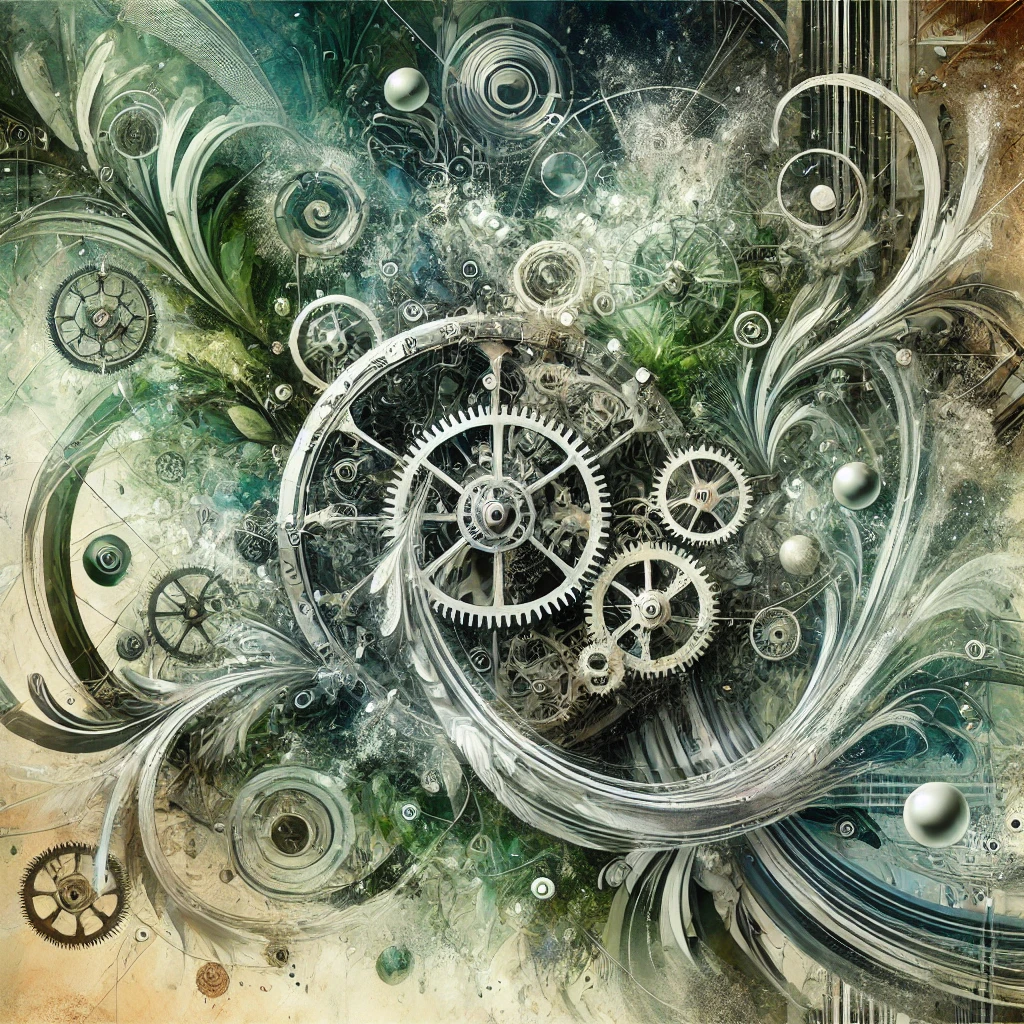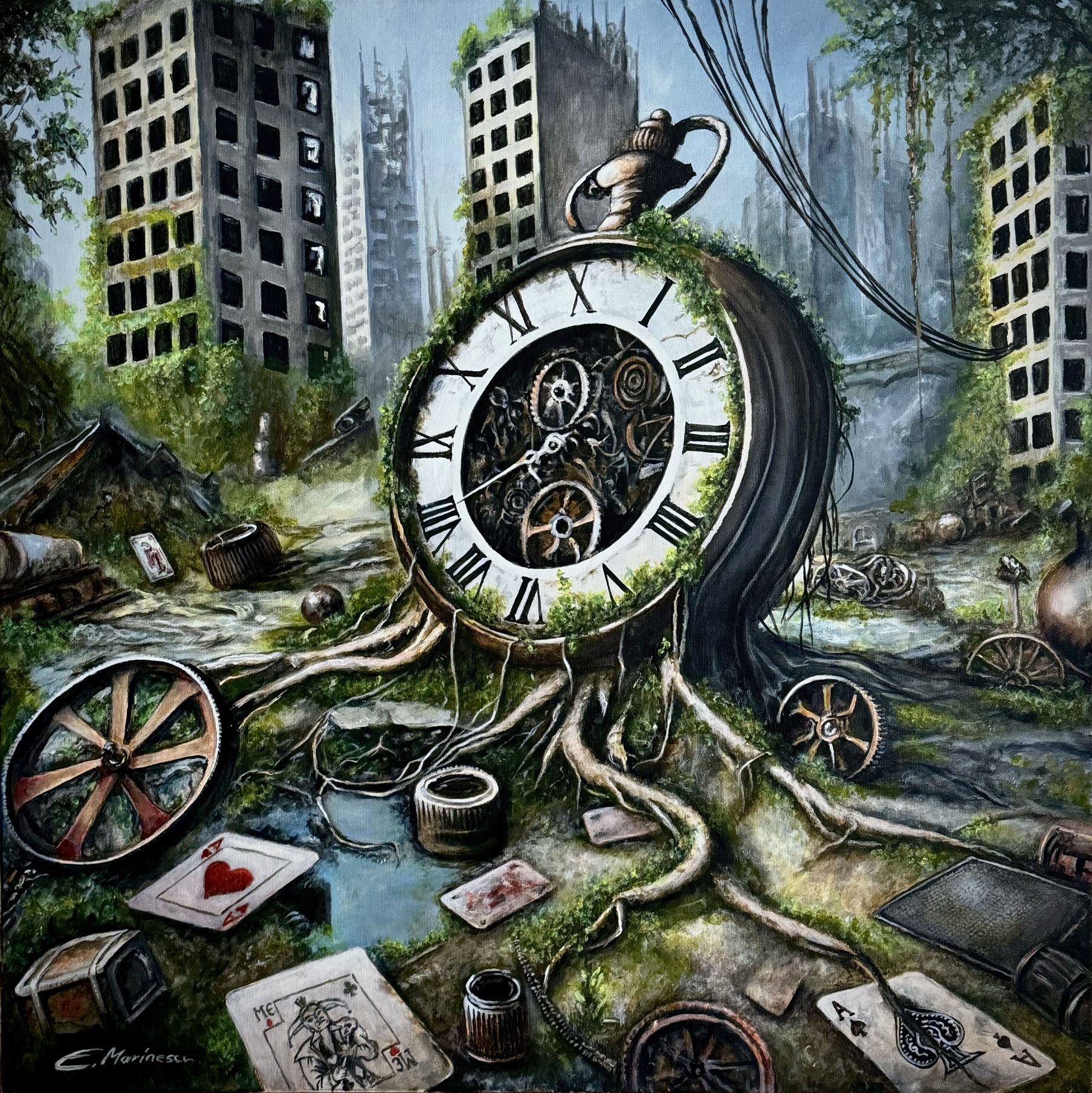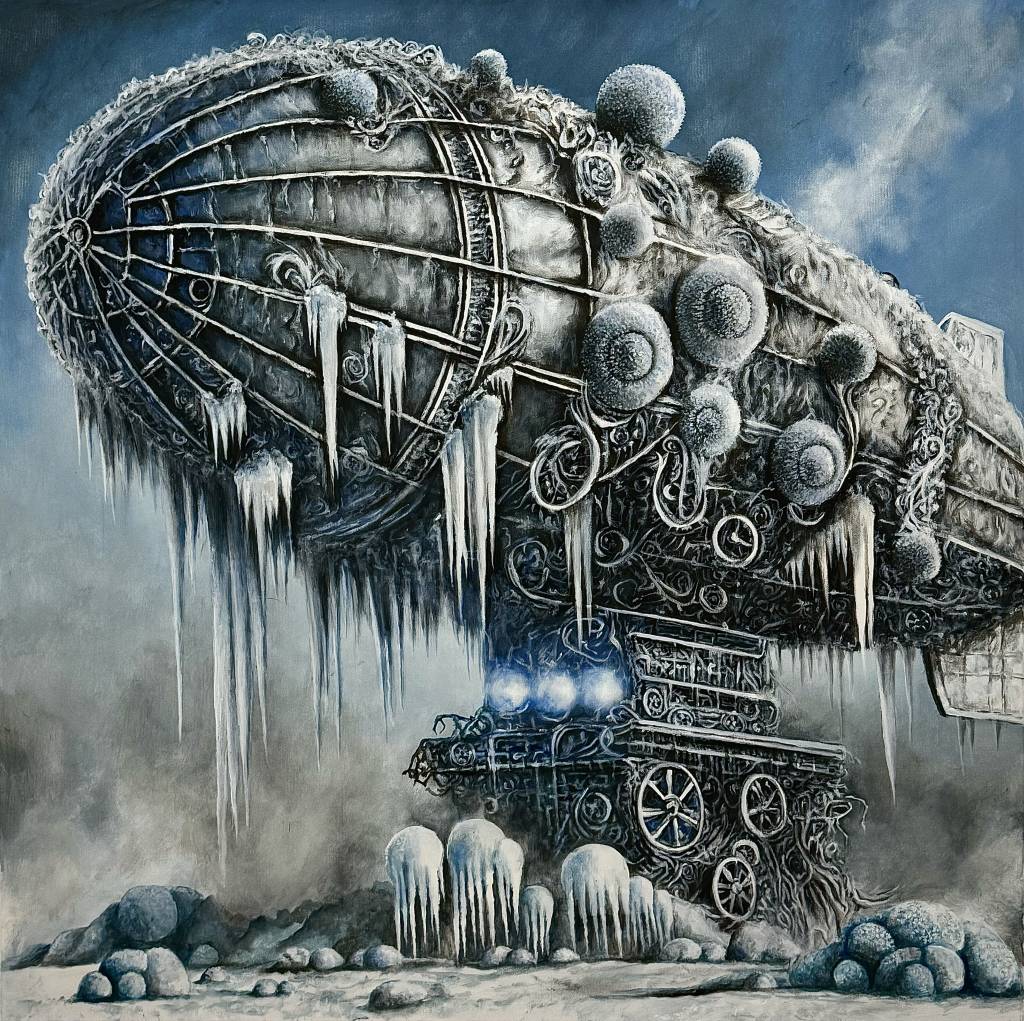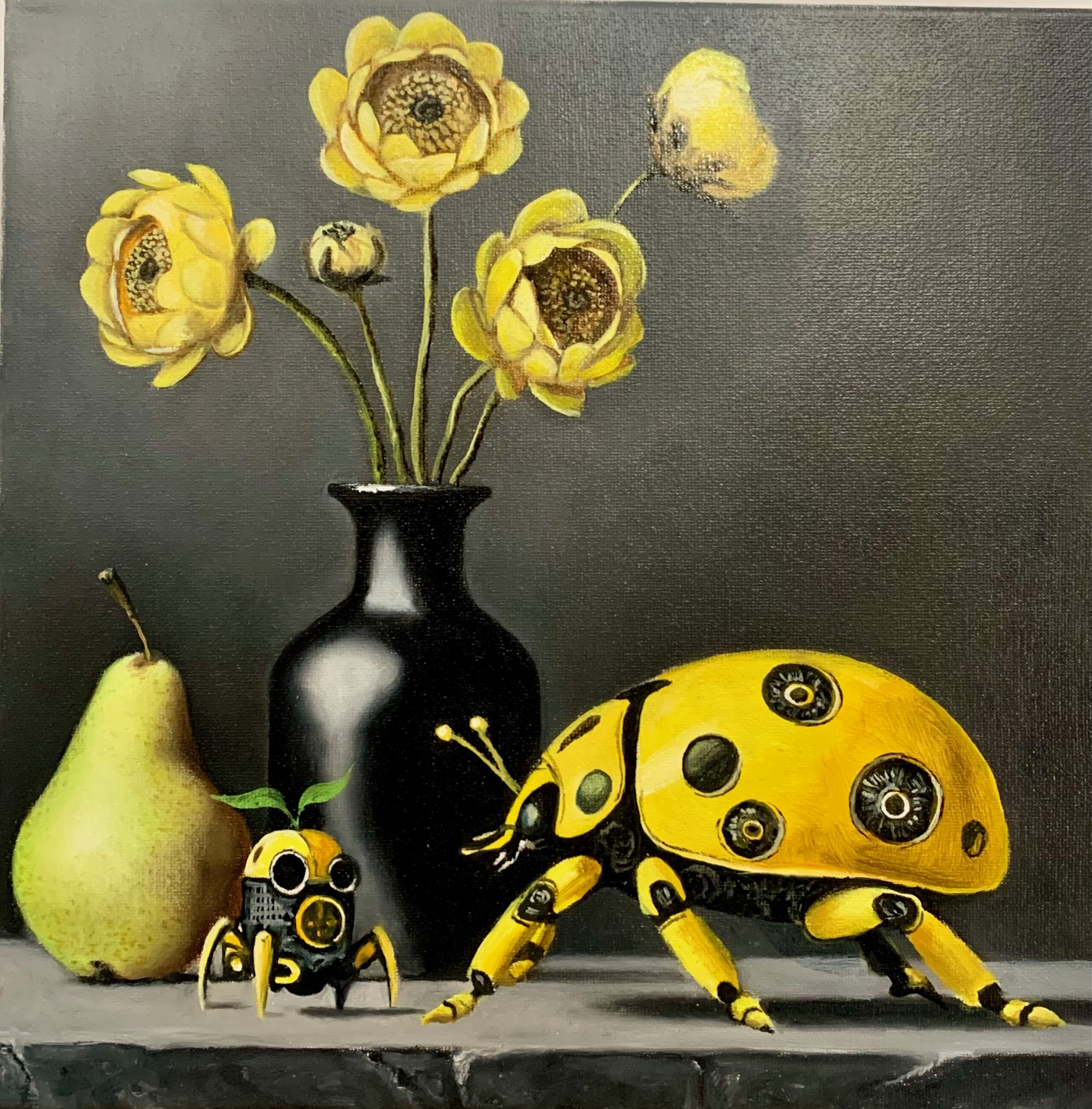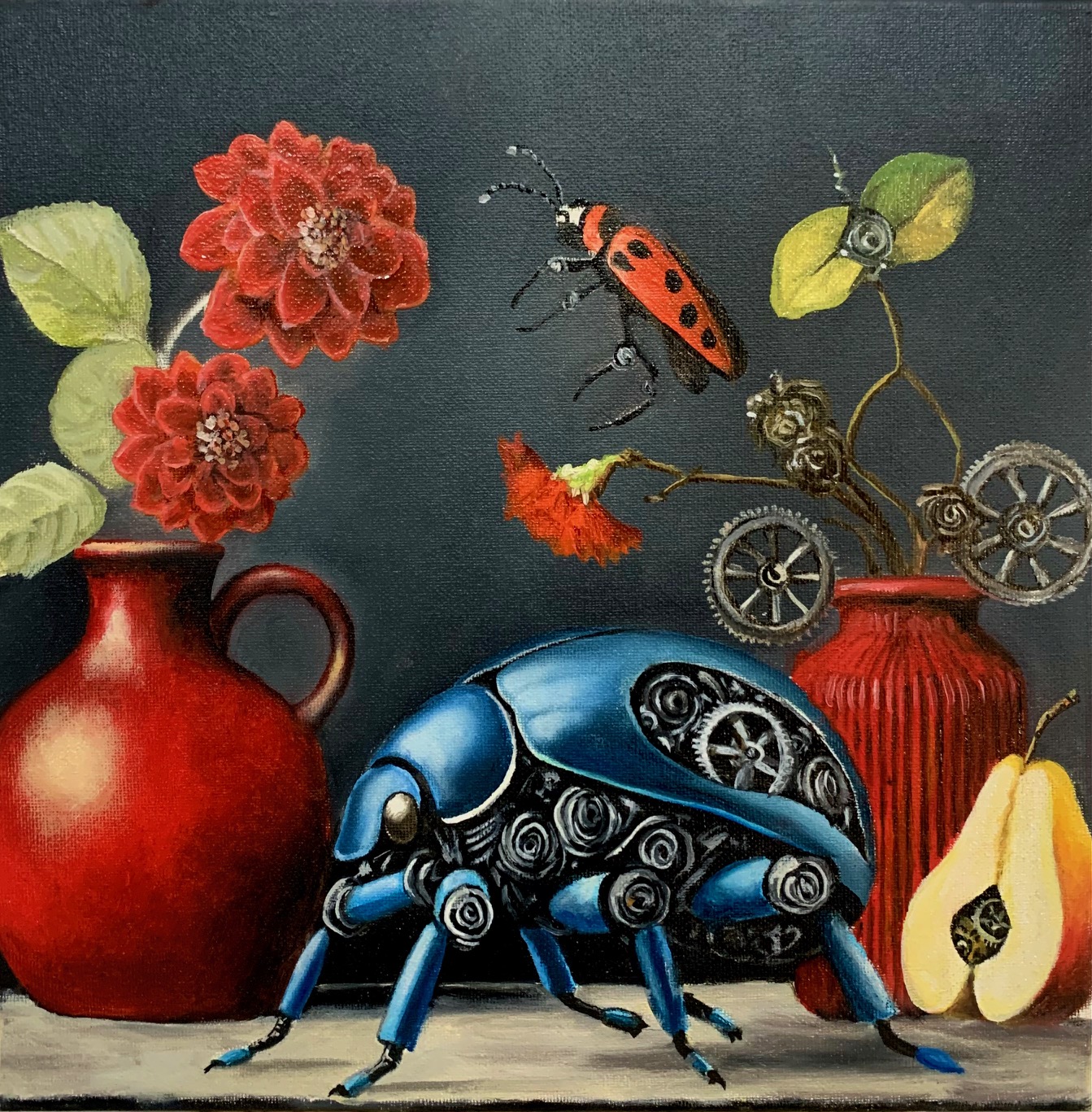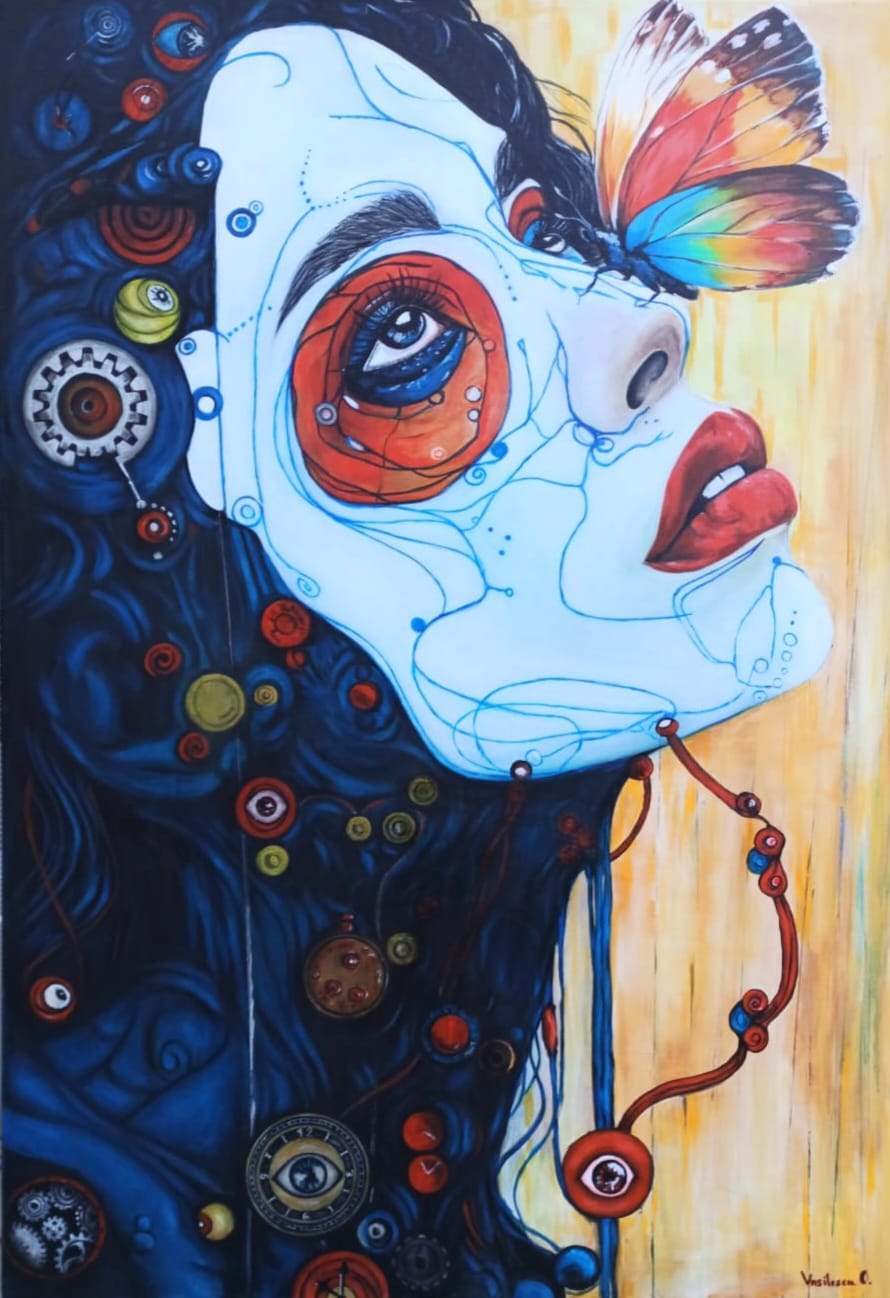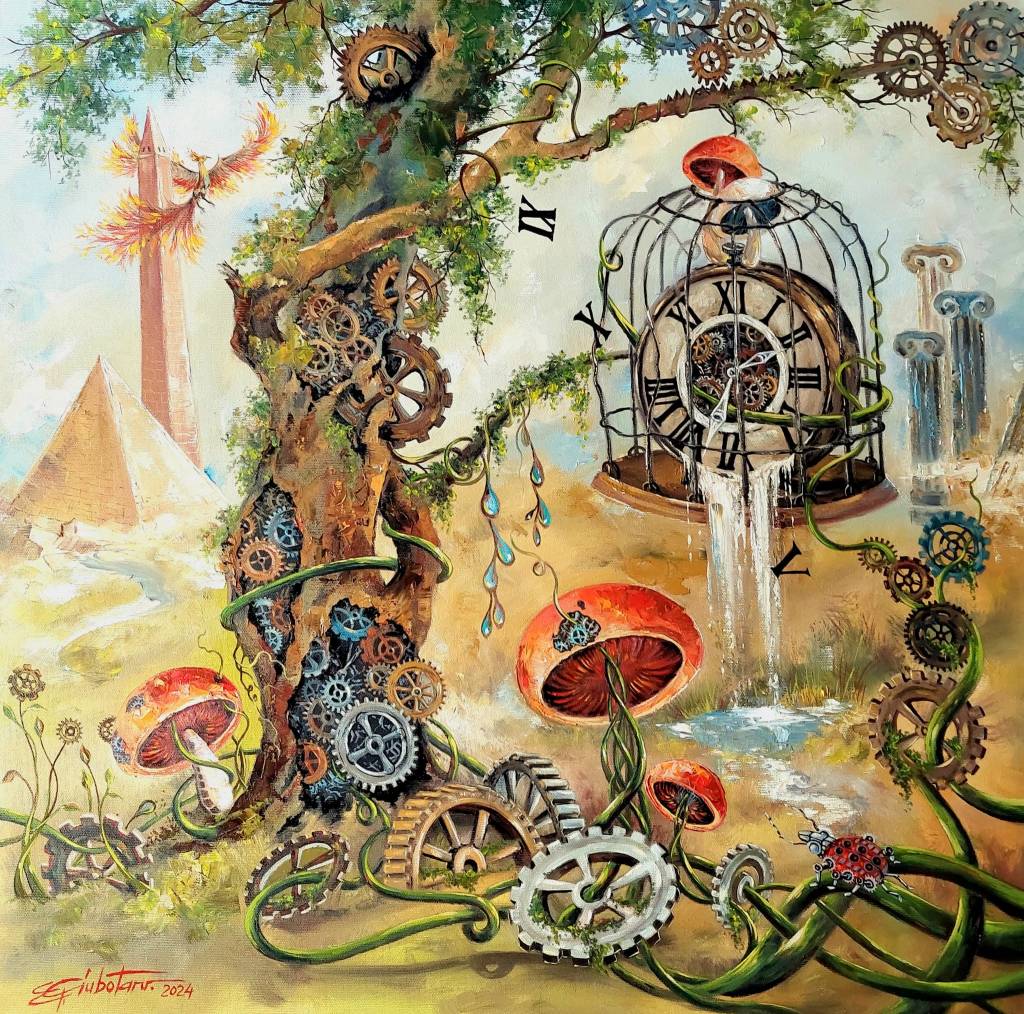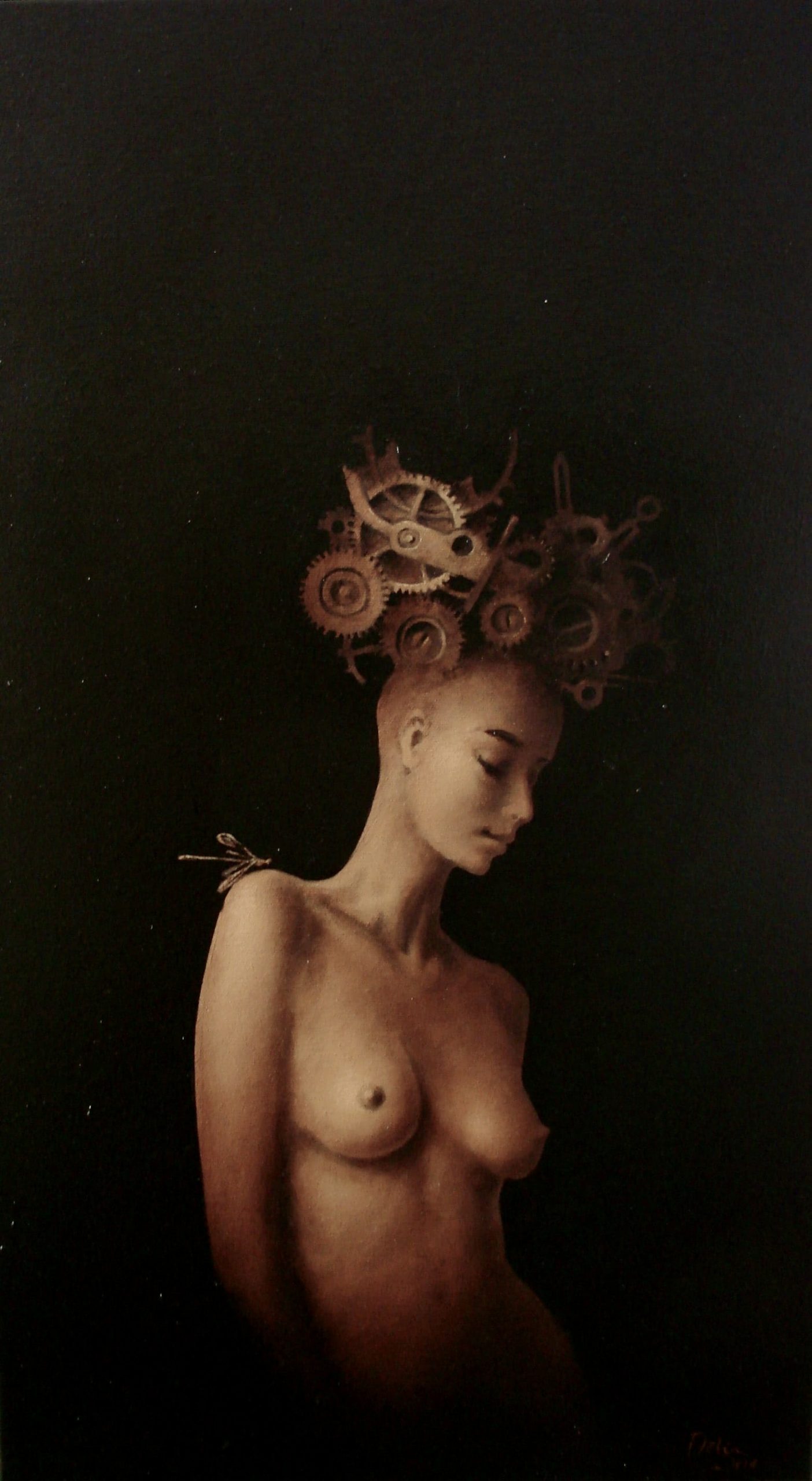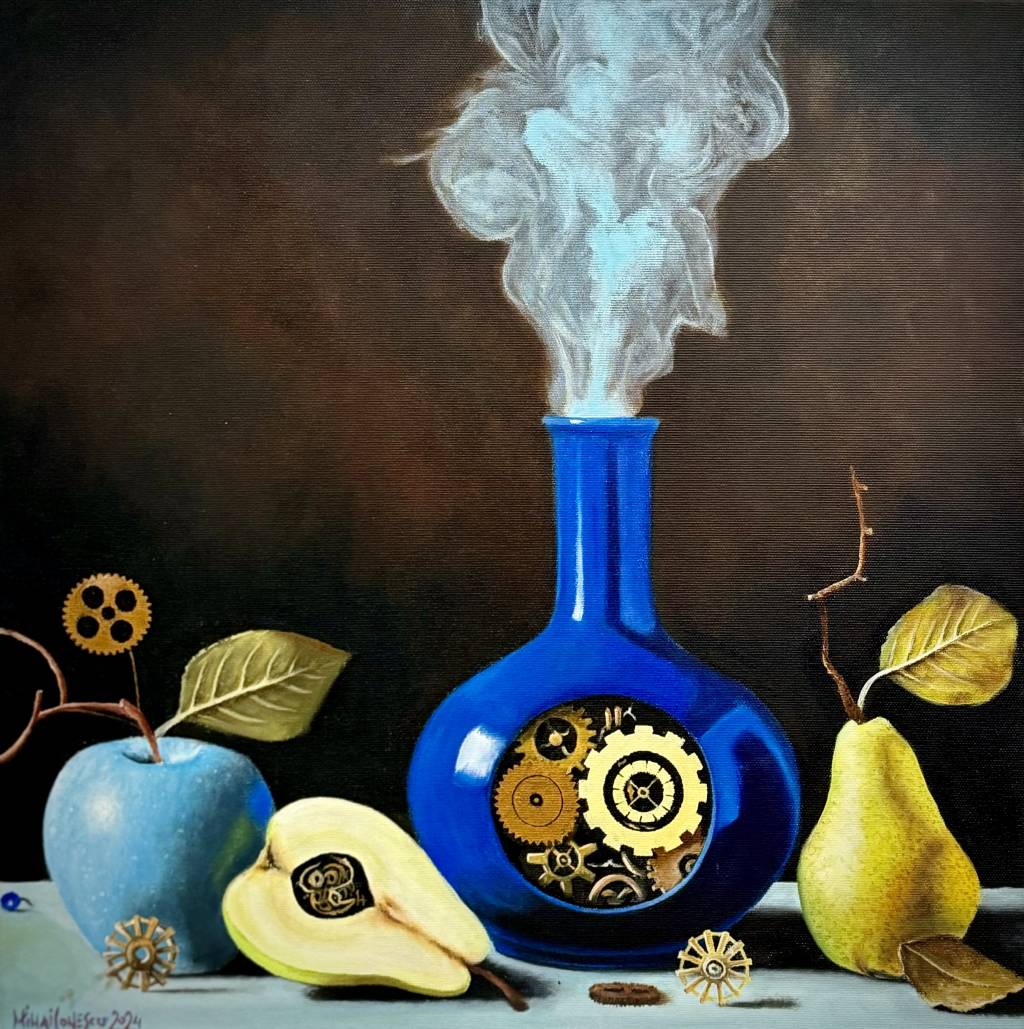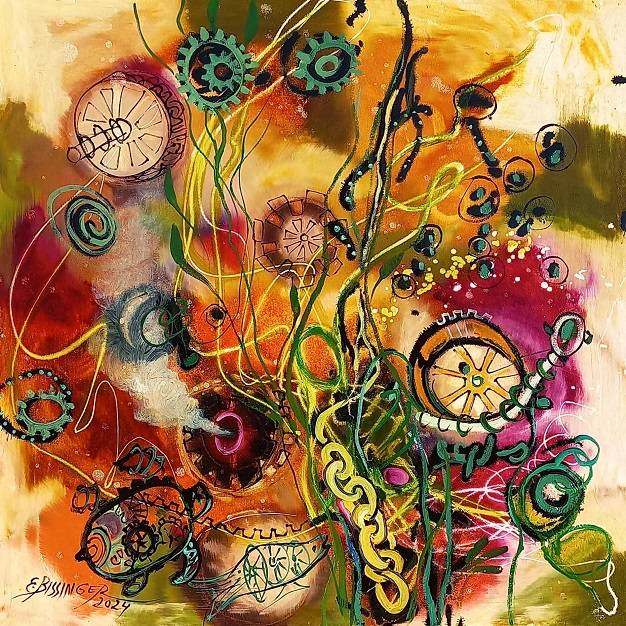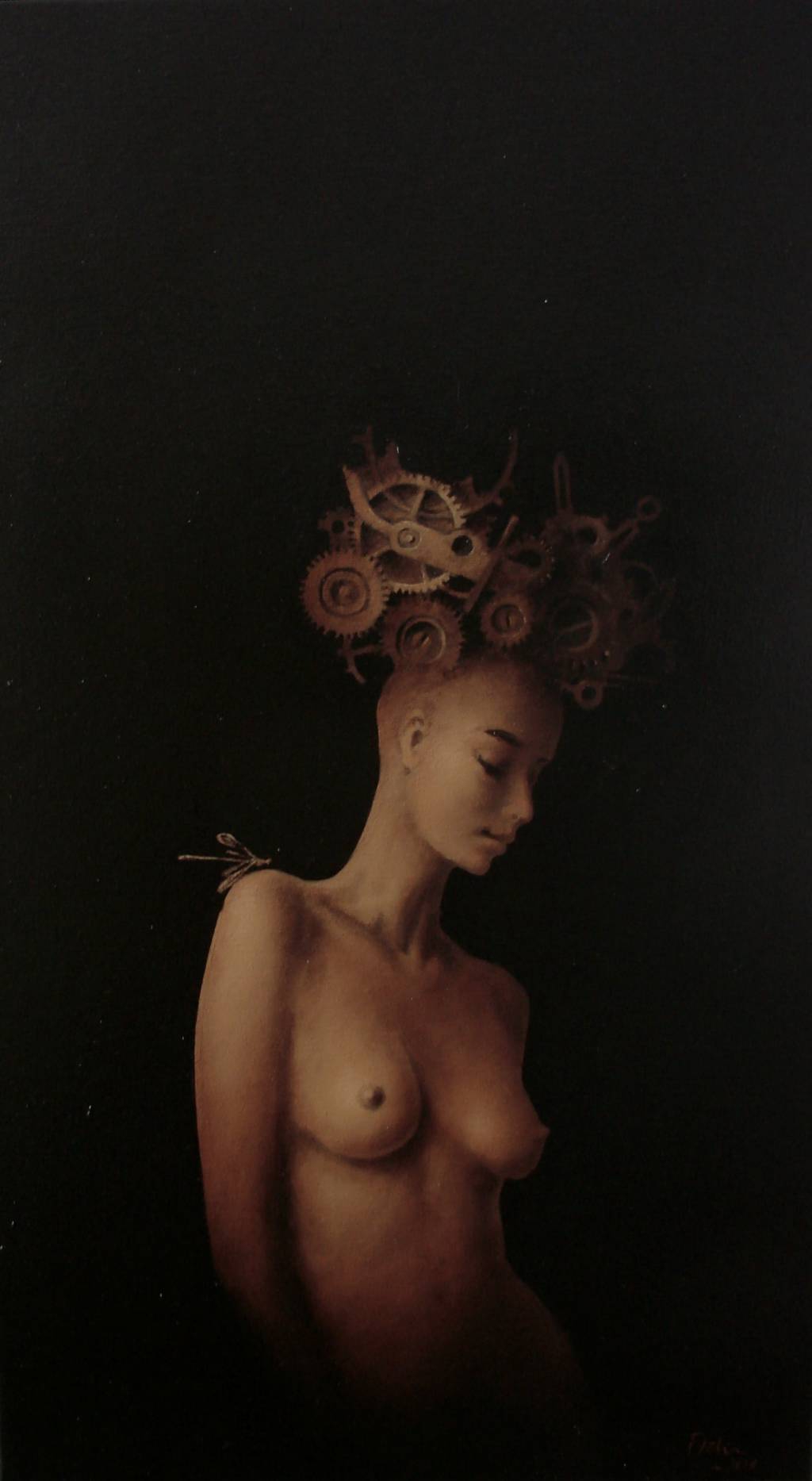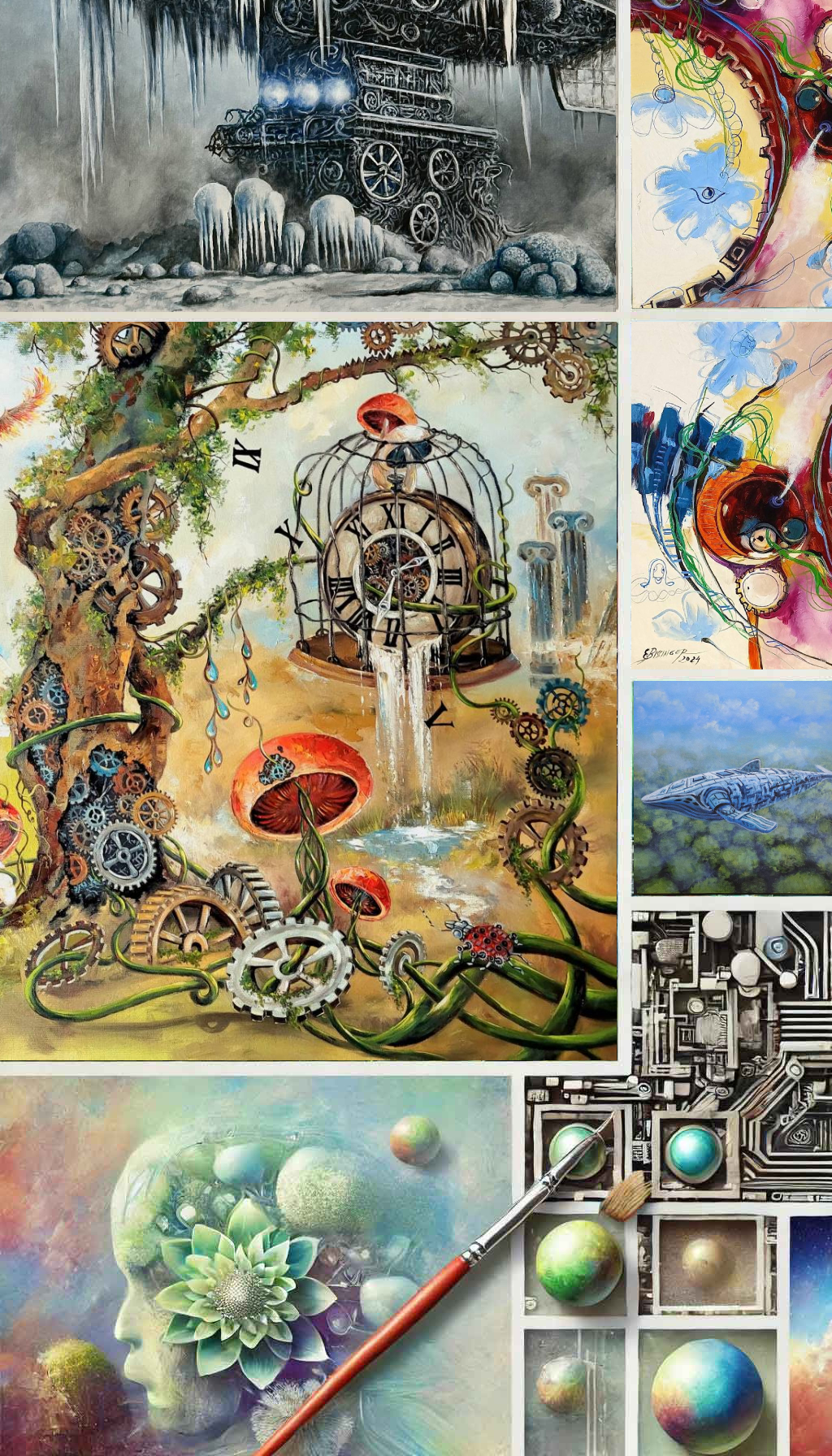
About Bionantism
Artistic current can be defined as a well-defined cultural or aesthetic movement and having a common vision of art. This movement manifests itself in a specific historical period and has distinct characteristics, themes, techniques and styles. In general, they are influenced by the economic, social, technological or philosophical context of the respective time.
The distinctive elements of a current are: the common vision (that is, an idea is shared by a group of artists), the manner of expression (different techniques and means of expression), the specific theme, the specific duration (some currents are ephemeral but revolutionary), interdisciplinarity (although a current may have roots in one field, it may also spread to another field – for example, Surrealism began in literature but spread to painting).
The currents can be general – that is, they manifest in several fields – or specific – they develop exclusively in an artistic environment (impressionism, cubism, fauvism – in painting).
The role of the artistic current is to reflect the respective era, to be a mirror of the society of the respective time, to be innovative and to connect artists
Theorizing a specific artistic current is an important step in the case of painting or the visual arts, and there is no automatic transition from literature or philosophy to painting, in the case of a current born outside of this discipline. Although the philosophical or literary concept may influence the artist, a clear theoretical framework and a coherent visual manifestation are necessary for the theme to become a movement and then an artistic current.
Theorizing not only helps to structure and clarify the artistic vision, but also ensures coherence and recognition of the current among other artists, critics and the general public. Without a well-defined theoretical framework, the current risks remaining only a theme to be explored by a few artists, without having a wider influence or a significant impact on the art scene.
Upon closer observation, one notices that there are several conceptual gaps in the painting. These refer to the lack or absence of a theoretical framework or a coherent visual language to describe or structure a certain concept within the artistic framework of painting. This means that an artistic idea or vision has not yet been sufficiently articulated or developed in a systematic way within the painting, either through theorizing or full visual expression.
In contemporary painting, for example, despite its diversity, there are a number of conceptual and aesthetic gaps when it comes to integrating technology into nature.
Currents such as fantasy, steampunk or other subgenres thereof, more or less theorized, have tried in their own way to address the relationship between the natural and the artificial, but they have, as a rule, focused either on fantasy themes or extremely futuristic or dystopian. These approaches have remained either too technical or too symbolic, failing to offer a new aesthetic vision that treats technology as an integral part of nature, not just an adjunct or destructive force.
In this context, a significant conceptual gap in contemporary painting is highlighted. This void begins to be explored through the theme of Bionantism, which proposes a fusion between the natural and the technological. In this vision, technology not only coexists with nature, but becomes a natural extension of its evolution.
Mihai Ionescu defines Bionantism through the following artistic statement:
Bionantism can be outlined as an innovative artistic current, dedicated to redefining the nature-technology relationship in a believable, balanced and harmonious way.
In an age dominated by ecological crises and accelerated technological advances, Bionantism comes and responds to the need to understand and integrate these fundamental forces of our existence into a profound and coherent artistic vision.
Why Bionantism?
In contemporary art, there is a conceptual gap in exploring the natural-technological connection. Although similar themes exist in literature, science or philosophy, they are rarely found in painting or other visual arts. Bionantism aims to fill this gap, through a unique visual language that explores the symbiosis between technological mechanisms and organic nature, without resorting to utopian exaggerations or the retro-industrial aesthetics of Steampunk.
The Fundamental Values of Bionantism
In Bionantism, technology is not a disruptive or foreign element, but becomes a natural extension of nature. This current explores the harmony between natural and technological elements, where both evolve together, sustaining life and transformation.
1. The symbiosis between nature and technology
Unlike other currents that glorify fantasy or dystopia, Bionantism maintains a balance between organic and technological elements, presenting them in a plausible and functional way. This is not pure magic or metaphor, but a logical and integrated fusion.
2. Balance and plausibility
Through innovative colors, shapes and compositions, Bionantism develops its own aesthetics that reflect the complexity of the modern world. Natural textures merge with technological ones, and organic forms expand into mechanical structures or bodies, suggesting a deep cohesion.
3. Exploring contemporary aesthetics
Sustainability issues, technological integration and the impact of biotechnology on nature are global themes. Bionantism addresses these concerns through an artistic perspective, providing a platform for introspection and dialogue.
4. The universality of the theme
Bionantism in the Visual Arts
In painting, sculpture, digital art and other forms of visual expression, Bionantism can be manifested through works that combine:
- Biomechanical static natures (fruits, plants, living things or objects integrated with subtle mechanisms, without losing realism).
- Landscapes where technology and nature complement each other harmoniously, depicting trees with discreet mechanical inserts or flowers with technical details subtly integrated into their structure.
- Portraits of human or non-human beings, in which technological structures support or amplify organic elements.
In a world where the barriers between natural and artificial are becoming increasingly blurred, Bionantism offers a unique perspective designed to inspire and challenge.
A Call to Action
Bionantism is more than an artistic current. It is an open invitation to artists, thinkers and creators to participate in defining a new vision. Whether it’s painting, sculpture or digital art, anyone who feels they empathize with the values of Bionantism is helping shape a world where technology and nature coexist harmoniously.
Clarifying the Identity of Bionantism
The Bionantism’s artistic statement is essential to clarify the current’s identity and avoid confusion with other artistic movements, such as Steampunk, Fantasy or Surrealism. Through a well-defined theoretical framework, Bionantism consolidates its uniqueness and position in contemporary visual arts.
For example – an artist creating a still life with fruit with subtle internal mechanisms might be forced into surrealism, although there is nothing dreamlike or absurd about the work. Also, it could not be classified as steampunk because it lacks the Victorian period elements and the other elements characteristic of it.
The differences between Bionantism and other currents
Fantasy in painting:
- Definition: Fantasy is an artistic genre that explores supernatural and mythological worlds, characterized by fantastic creatures, magic and unrealistic settings.
Features:
o Fantasy elements such as dragons, wizards and magical universes.
o Emphasis on narrative and unreal aesthetics.
o Technology is usually decorative or fantastical, often having a magical function.
o Often associated with fantasy literature and video games.
Bionantism:
- Differences:
o Replace magic and the supernatural with a realistic fusion of technology and nature.
o It does not aim to create unrealistic worlds, but to imagine a believable interaction between mechanisms and bios.
o Lack of mythological or magical beings – any technological element in Bionantism is biologically or functionally justified.
o It is deeply connected to contemporary challenges such as biotechnology, sustainability and ecology.
Conclusion: Fantasy is about escaping into supernatural worlds, while Bionantism is about integrating technology into nature in a harmonious and plausible way.
Steampunk in painting:
- Definition: Steampunk combines retro-futuristic technological elements inspired by the Victorian era with industrial settings and mechanical aesthetics.
Features:
o Technology based on steam and mechanical gears, in an industrial setting.
o Designs with elaborate embellishments, retro aesthetics and dominant Victorian elements.
o Sometimes includes mechanized beings or impossible technologies, but in a retro style.
Bionantism:
- Differences:
o Completely avoid retro or Victorian aesthetics, preferring a subtle, organic and futuristic technology.
o Technology in Bionantism is harmoniously integrated into nature, without industrial decorations or mechanical exaggerations.
o Lack of steam and the emphasis on heavy industry which are central to Steampunk.
o It does not glorify the past, but explores an evolving vision of the future.
Conclusion: Steampunk is industrial and nostalgic, while Bionantism is organic, futuristic and balanced, with no ties to retro-industrial aesthetics.
Surrealism in painting:
- Definition: Surrealism explores the unconscious, dreams and imagination, creating illogical, absurd or dreamlike compositions.
Features:
o Contradictory images, juxtaposed in unexpected ways.
o Emphasis on the subconscious, fantasy and dream states.
o Absurd and inexplicable elements without scientific basis.
Bionantism:
- Differences:
o Completely avoids absurdity or illogic. Each element has a functional, biological or technological justification.
o It does not explore dreams or the subconscious, but the tangible relationship between nature and technology.
o The landscapes and compositions of Bionantism are believable, even if they are futuristic.
Conclusion: Surrealism is based on the illogical and absurd, while Bionantism explores tangible and functional possibilities.
The Future of Bionantism
